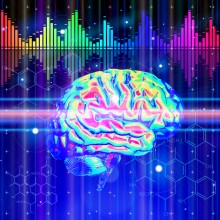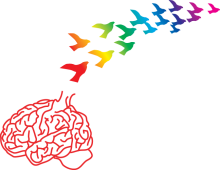What is Neurofeedback?
Neurofeedback teaches the brain to change itself and helps attention, mood, behavior, cognition, and more. In simple terms, neurofeedback is positive reinforcement for the brain. It teaches the brain how to be better balanced by feedback through tiny sensors that temporarily stick to the scalp with a small amount of paste.
The neurofeedback device measures brain waves and teaches the brain to make healthier patterns by rewarding the brain when it does so. Once these healthier brain patterns are practiced and learned, the effects of neurofeedback tend to hold, at least for many problems. As someone’s brain learns to improve and better modulate its own regulation, medication can often reduced. Sometimes, it allows medications that weren’t working well to work better.
When it’s hard to pay attention, when you feel depressed or anxious, or when you can’t stop thinking about something or your mind from racing, is it psychological or a physiological?
Training the brain using neurofeedback changes these problems. It helps improve alertness, attention, emotional regulation, behavior, cognitive function, and mental flexibility. Changing the brain clearly affects the mind. Brain training produces a measurable physiological effect on the brain that when practiced, more likely becomes the brain’s regular pattern.
Neurofeedback Is Simple To Do
 Neurofeedback uses a brain/computer interface that detects brain activity. By using operant conditioning, you get rewarded when your brain makes more of certain types of brain activity. Your brain might get a beep when it’s doing the right thing. Depending on the game the clinician uses, it can be like playing a video game with your mind.
Neurofeedback uses a brain/computer interface that detects brain activity. By using operant conditioning, you get rewarded when your brain makes more of certain types of brain activity. Your brain might get a beep when it’s doing the right thing. Depending on the game the clinician uses, it can be like playing a video game with your mind.
Changes in EEG brain waves mean changes in brain timing, and can create a more alert and stable brain or a more calm brain. Excessive fast or slow activity is associated with brain dysregulation and a variety of clinical symptoms. Brain training helps improve self-regulation.
Where you train on the head can make a difference. A few examples:
- 1Depression is often shown in brain imaging studies as too little activation in the left frontal lobe (excessive slow EEG activity or lack of blood flow). By training increased activation over that area, depressive symptoms can be reduced. It can take many sessions for the brain to learn this new pattern. Once it does, brain training can stop.
- 2Problems falling asleep can often be improved by training over the right hemisphere’s central motor strip. Falling asleep becomes easier. Training that same person’s left hemisphere could have a very different effect, including making it harder to fall asleep. But each individual is different, and training needs to be adjusted accordingly.
Neurofeedback, psychotherapy, and medications can all work symbiotically. Brain training can be used with people who are both on and off medications. As the brain stabilizes and becomes better regulated, medications, psychotherapy, and other modalities often become more effective. It’s not uncommon to see a reduced need for medications as brain regulation increases.
Neurofeedback Helps Brain Regulation
When you give the brain information about itself, it has an enormous capacity for change. Neurofeedback provides the brain with real-time information and asks it to make adjustments. The brain can respond rapidly. Changes in the EEG due to feedback tend to correlate with improved behavior, mood, affect regulation, and attention. Change in EEG behavior is a direct reflection of changes in neuronal firing. EEG training is thought to improve activation, inhibition, and cortical stability, while impacting regulatory mechanisms.
Neurofeedback Helps Brain Flexibility
 We’ve all seen someone go from being dejected and depressed to elation (your team just scored and took the lead) in moments. State flexibility is inherent in the brain.
We’ve all seen someone go from being dejected and depressed to elation (your team just scored and took the lead) in moments. State flexibility is inherent in the brain.
Getting stuck in a particular state causes problems. For example, if someone gets angry, how long should it take to shift back to calm? If it takes a long time their brain may be stuck in that state.
We think of brain flexibility as allowing the brain to shift states more fluidly, perhaps in minutes. A lack of brain flexibility can contribute to problems from impulsivity to attention to behavior. Neurofeedback appears to increase state flexibility.
Biofeedback Is Not New
In the 1960’s, cats in a lab were able to change their EEGs with operant conditioning. No one had a clue, particularly the chief scientist involved, that changing the EEG would improve brain regulation and inhibit seizures. This finding was accidental, yet it’s the research that launched this field. Discoveries in neuroscience during the 1990’s advanced the field of EEG biofeedback, and information from MRI’s, PET and SPECT scans, and other brain imaging techniques has helped target sites for brain training.

